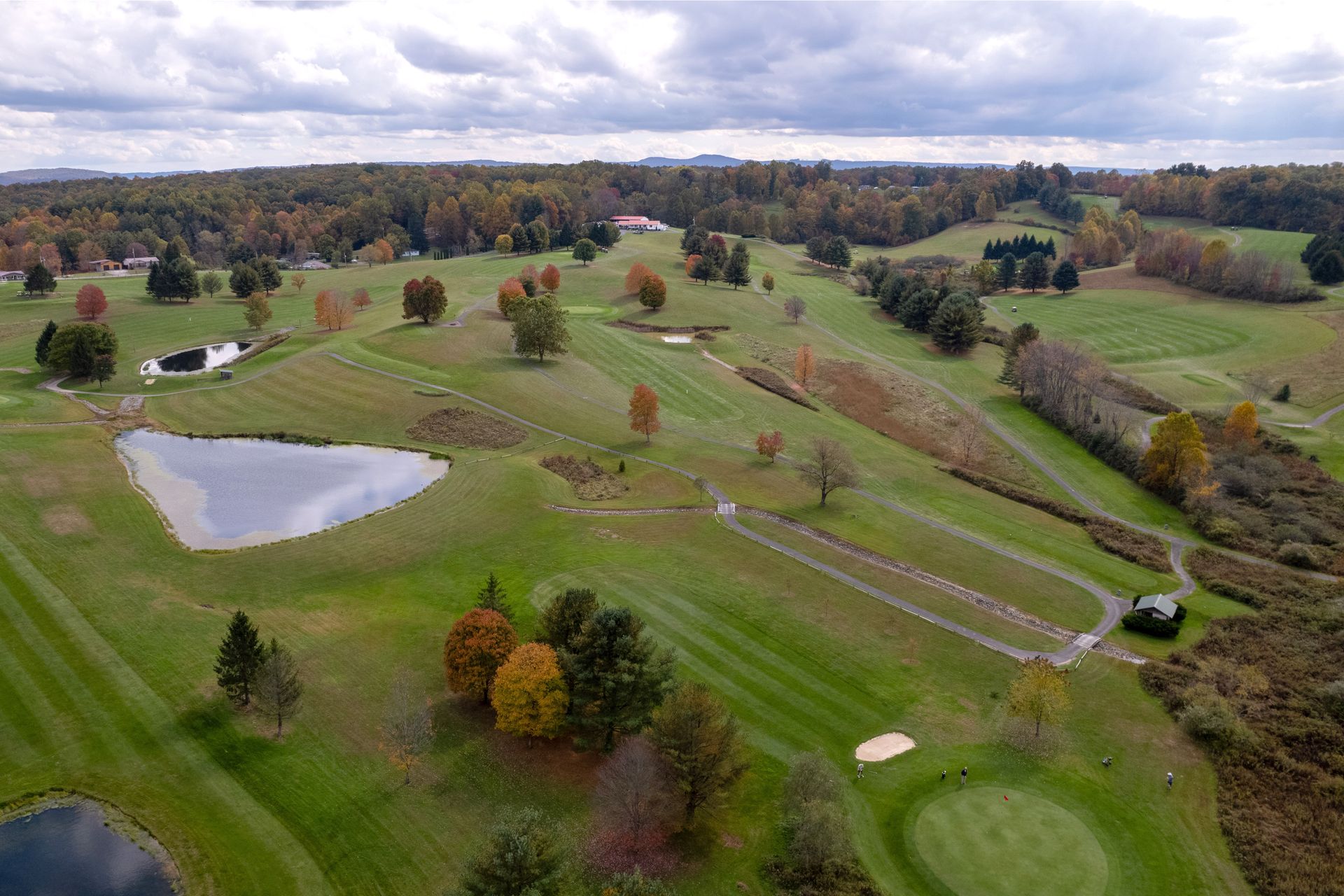
Tour the Course
Satellite view
The map below marks the location of each hole. The Jeckyll layout's holes are indicated with red circles while holes in the Hyde layout are indicated with blue circles. Click a circle to see more information about that hole.
1992 - Jeckyll layout
Initially opened as a Par 36, nine-hole layout, Bridge Haven’s front nine has three par 3s, three par 4s, and three par 5s. Since opening in 1992, the front nine has changed substantially. Several tees have been added and the small pine trees have become substantial obstacles making cutting corners and carrying doglegs a much more difficult task. Even with those increased challenges, the front nine remains the easier of the two sides. All three par 5s are reachable in two for most average length golfers. The short par 4 second hole is also a hole most players expect to have a good look at birdie. The strength of the front nine is the long par 3 fourth hole stretching nearly 225 yards uphill from the blues; and the 400 yard par 4 fifth hole, with out of bounds all the way up the right side and tall pine trees guarding the left side of the fairway. While several birdies can be expected on the front nine, out of bounds down the right side of the 5th and 7th holes looms waiting to turn a birdie into a double bogey.
The new Stripe Show tees, unveiled in 2024, did see one significant change on the front 9. The long, uphill Par 3 number 4 plays 223 yard from the Blue Tees. The Stripe Show tee on #4 now plays a daunting 243 yards.
1995 - Hyde layout
The back nine, a par 35, opened in 1995. The greens are substantially larger and more undulating than their sister greens on the front 9. The severe slope on the 10th and 11th greens wait to shock the golfer’s senses after coming off of the tame front 9 greens. In addition to the more challenging greens, the back nine has several holes where you have to hit over ponds and federal wetland hazards. Similar to the front, length is normally not an absolute for a good score, but patience and placement is rewarded as the two par 5’s on the back nine will reward length, as long as that length includes accuracy. The course’s signature hole is the par 3, 14th hole. A short par 3 over water to a very wide, but narrow green can make for a challenging short iron shot. While not to the level of the 12th hole at Augusta, it does have similar design characteristics and can have the same impact on a golfer’s mentality to finish their round. The last par 3 on the course is a downhill short iron shot. Again, not to the same mystique of the 17th at TPC Sawgrass, it creates some of the same challenges as just about any shot left, right or long will find the hazard. Because the hole will normally require a short shot with a high ball flight, the almost always windy conditions at the course will make the 17th tee shot a pivotal make or break point for any tournament or match.
The 2024 addition of the Stripe Show tees increased the length and difficulty of the 12th, 14th and 15th holes. The new tee shot on 12 requires a straight tee shot of at least 200 yards just to make it through the tight shoot. The upper tee box on the 14th hole has increased the Par 3’s yardage to over 190 yards which is all carry over water to a fairly narrow green. And lastly, the back tee box on the 15th hole has made the tee shot’s angle slightly easier but has increased the required carry (over water) to 240 yards!
Overall, Bridge Haven’s par 71 layout is a Jekyll and Hyde golf course. The golfer can easily tell that the two nines were designed by different people but combine to create a fun challenge that invites birdies and double bogeys alike.
